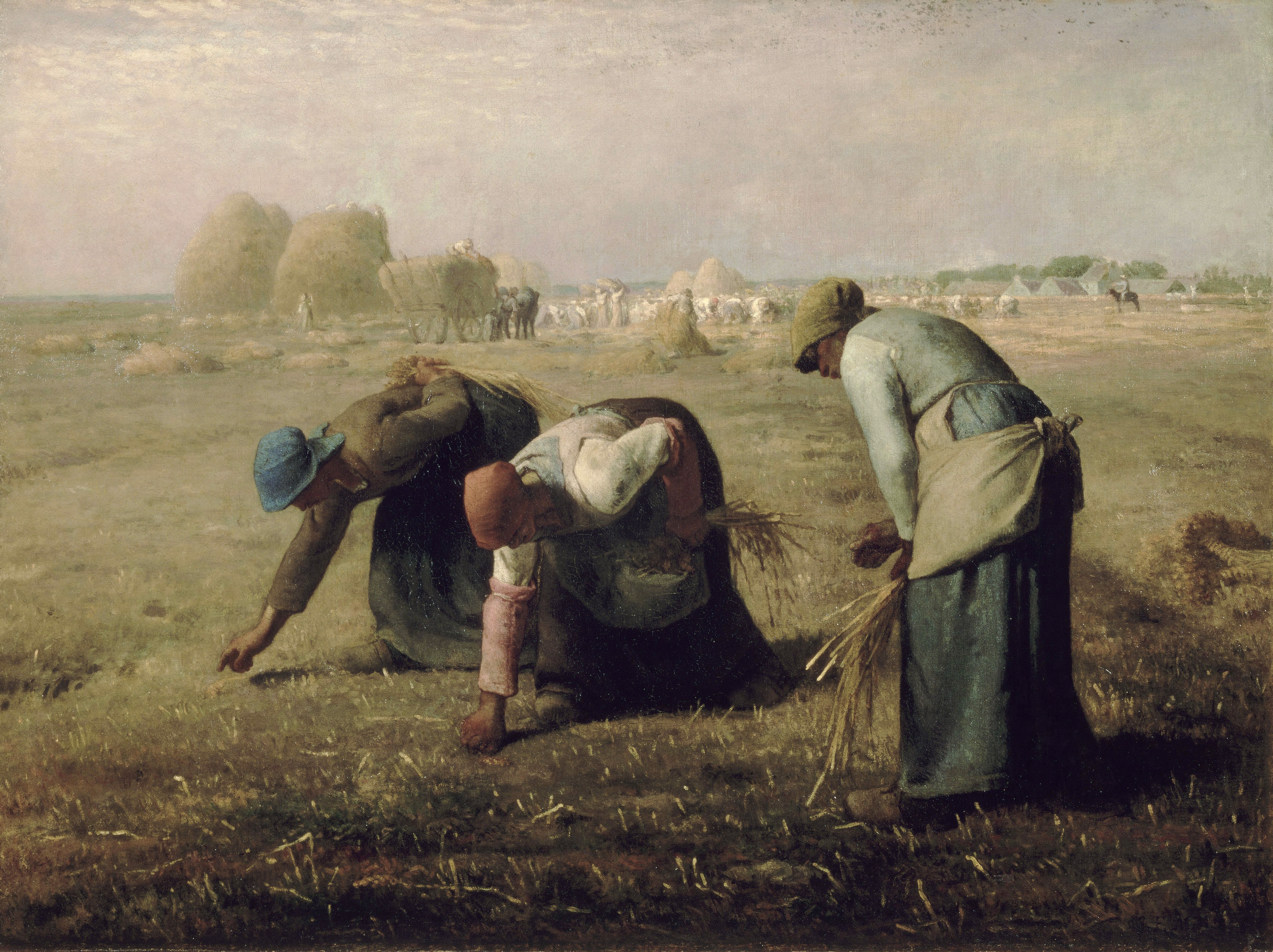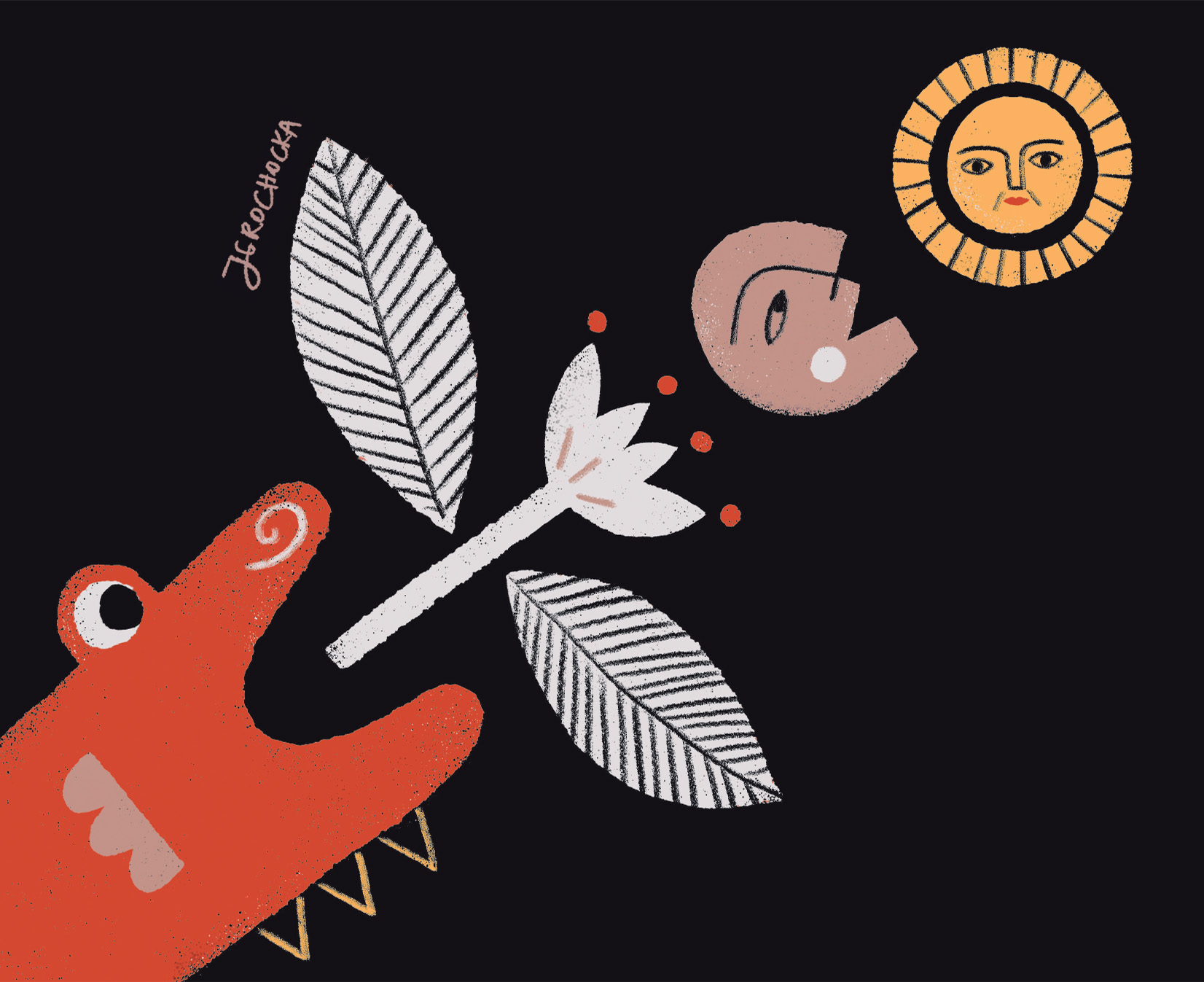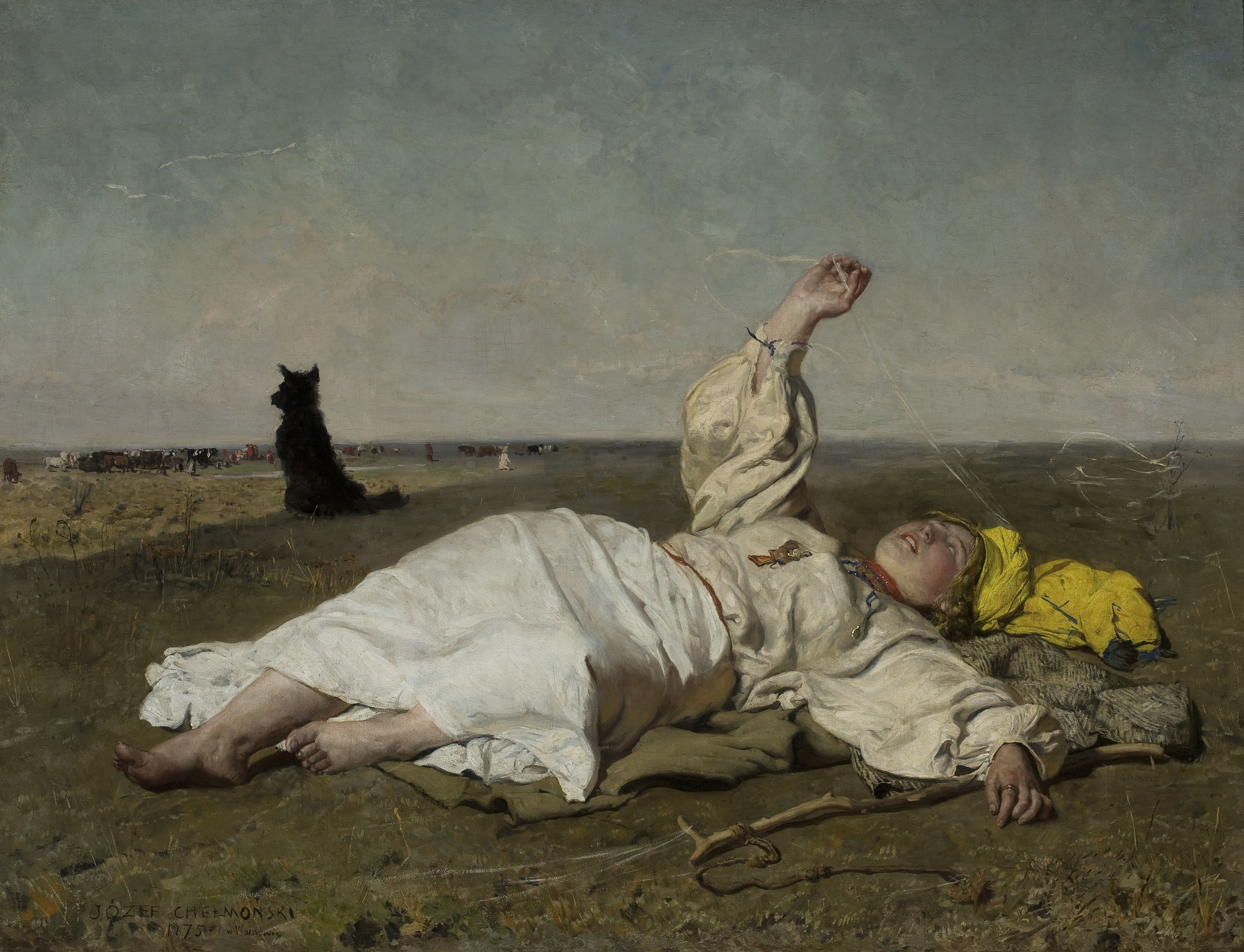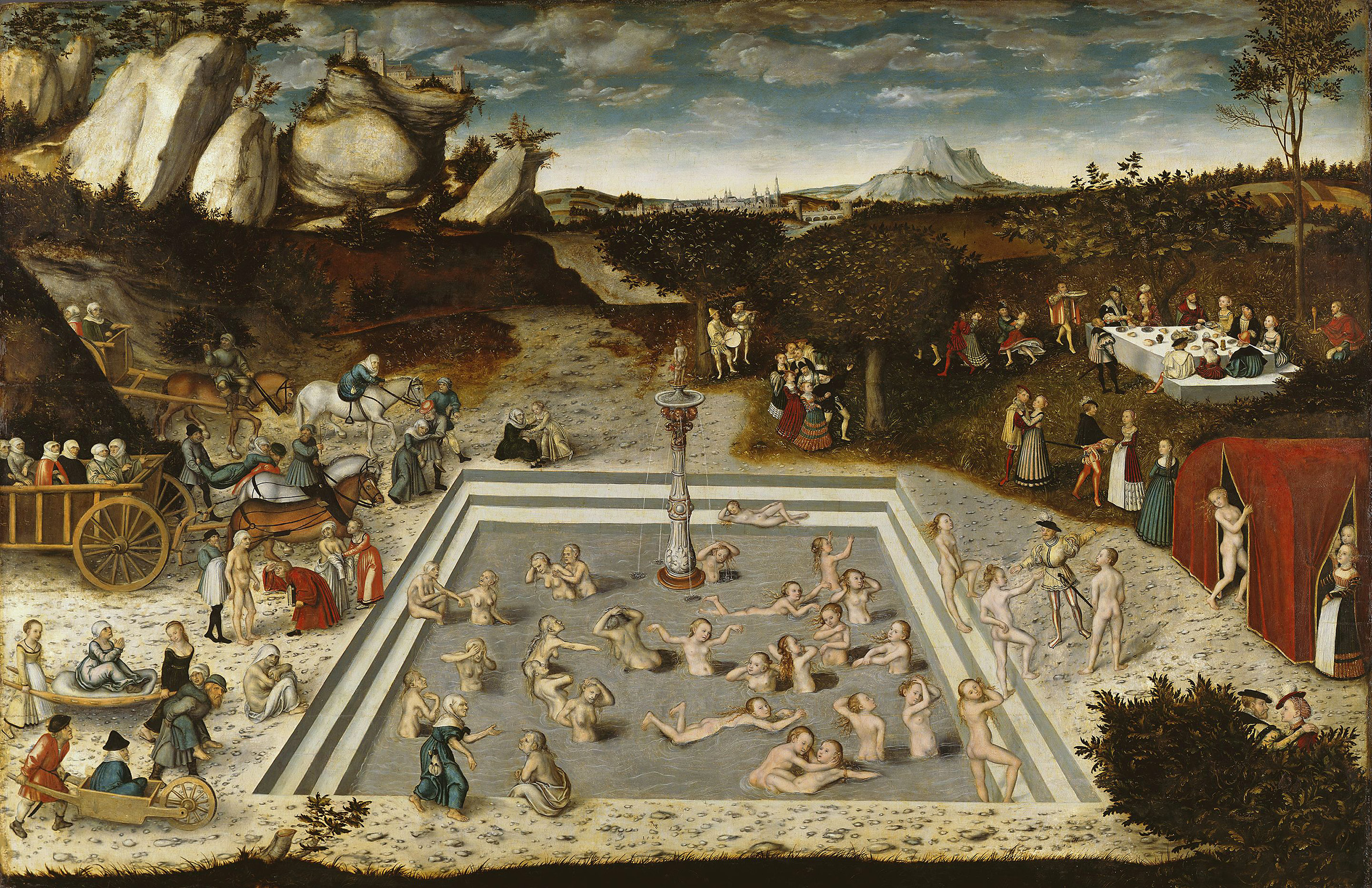
We enjoy fantasizing about advanced inventions of the future. Meanwhile, the greatest technological revolution in history probably took place a long time ago. What did this revolution entail and who should we thank for it?
As the famous French anthropologist Claude Lévi-Strauss claimed, all the current and future technologies would never appear if it weren’t for the prehistoric Neolithic revolution, which made the development of all other civilizations possible. Even if one day we start to colonize other planets, it will in the end always be associated with settlement and domiciliation, or in other words, prehistoric strategies for coping with the environment. The common notion of the prehistoric human as a wild and primitive being fails when we realize that these very people were the creators of fundamental ideas that we make use of to this day, and thanks to which we have ensured ourselves a rather comfortable place in the natural world.
The discovery of agriculture
The matter of the Neolithic revolution turns out to be quite complex when we take a closer look at it. Its beginnings are estimated at around 10,000 BCE and its outbursts were observed in different corners of our globe and different cultures independently; scientists continue to shift these time limits every so often. Meanwhile, different communities and cities compete for first place when it comes to the matter of their own age. Even if we were able to define this revolution, it still remains a phenomenon that is difficult to explain. Already the matter of the ‘discovery of agriculture’, which is central to the topic and which we pay the most attention to, seems to be hardly comprehensible and is difficult to define in a precise manner. After all, ethnographers note that for most peoples who lead a nomadic lifestyle and acquire their food from gathering, it’s quite clear that a seed that ends up in the soil will sprout.
Yet another theoretical problem is associated with the fact that a shift to agriculture is usually viewed as progress, as a required step towards ‘civilization’. Modern humanities has, however, taught us to be cautious whenever we want to make a distinction between ‘civilized’ and ‘uncivilized’ peoples. The general rule we follow really boils down to this: we define people who are similar to us as civilized, while those who do not remind us of ourselves, people who have ‘exotic’ customs, who do not wear clothes or talk with the spirits of animals and trees, are deemed as being ‘barbarians’, ‘primitive’ or ‘savage’ people, and so on. The congestion of cities of the Middle and Far East or mediaeval Mexico, writing, organized trade, the bureaucratization of life, institutionalized religion – all of this seems familiar to us, thus we view it as ‘civilized’. Hence, going back to our topic of discussion, as we ourselves live thanks to agriculture, we have the tendency to observe the evident acts of progress and reason in the Neolithic revolution.
The social sciences toppled such a view of history, along with many other ethnocentric notions. In Stone Age Economics, a classic work in the area of economic anthropology by Marshall Sahlins, the author convincingly demonstrated that the shift from an economy based on hunting and gathering to one based on tillage is in fact a historic mystery. The researcher took a stand against the image of the Palaeolithic human or modern hunter-gatherer presented as nearly-starved savages, condemned to a dramatic existence dominated by the fight for survival. On the contrary, Sahlins noted that such societies should rather be referred to as wealthy, if we understand wealth as the proportion of means vs. ends and needs vs. the possibilities to meet them. We, on the other hand, perceive nomadic tribes as poor only because we project the world of our own needs onto them, needs that these cultures and technologies are in no way able to fulfil. Indeed, nomads do not move around in cars and do not own houses, so they may evoke loose associations with the more poverty-stricken layers of our society, but is this fact indeed a result of the poverty of nomads?
The way we view hunter-gatherer societies also stems from our own depictions of the conditions they have come to live in. This is because even though survival in the desert seems nearly impossible to us, we associate it with the risk of hunger only because we have become so used to agriculture. Therefore, this does not in any way prove our superiority, but it rather paradoxically demonstrates our shortcomings: we are the ones who would not be able to cope with the situation there, as we do not have the appropriate skills and knowledge (as Lévi-Strauss showed in The Savage Mind, societies living in such areas possess impressive botanic or zoological knowledge and know how to apply it in practice).
Western observations quite often concerned the impoverished victims of colonialism, therefore it is difficult to perceive them as examples of the effectiveness of nomadic economies, just like it would be difficult to assess, say, the effectiveness of Western shipping operations by studying castaways, or even more precisely, by studying castaways who are victims of piracy.
Poverty or wealth?
The key reference point in our perception of wealth and poverty is the number of collected items. Yet possession of many things seems to be highly unfavourable from the viewpoint of a nomadic lifestyle, and that’s why this particular criterion for assessing wealth is also flawed (and again, it only expresses something about our own society). Nomads only have as many possessions as they are able to carry – or more specifically, as many as (most often) women are able to carry. Men need to be free and mobile when the opportunity to hunt something down comes along or if they need to defend themselves. Certain researchers claim that this lack of equipment is associated with the lack of time to produce it, if all energy is consumed in the pursuit of food. Yet Sahlins demonstrated that according to statements made by ethnographers, the time devoted to the collection of food in such economies is very short, to the point where many members of these societies do not know what to do in their free time. Therefore, the bulk of their time during the day is spent on… napping. This also seems to invalidate the option that these peoples do not develop a ‘civilization’ due to the lack of time and energy.
In terms of the effort invested in survival, we have the luxury of access to detailed measurements. According to research conducted in the 1940s on Indigenous Australian hunter-gatherer peoples from Arnhem Land, the average time devoted to work – thus acquiring food, preparing it for consumption, as well as possible production or repair of weapons and tools – was about 3 hours 50 minutes a day. Scientists also emphasized that because of the historic situation, the observed group could not have been as capable and well-trained in the art of hunting as their ancestors, who were in no way restricted by the emergence of the colony and who also enjoyed greater territorial freedom and did not have to change tools due to the lack of raw materials needed to produce them, and so on. Let’s also note that according to these studies, the work done by the Australians was not physically challenging at all.
In the 1960s, researchers took up the study of the famous African !Kung people. The results were very similar to those from Arnhem Land. One person who would hunt and gather edible plants (interestingly enough, in a region with rather low amounts of rainfall) was able to provide a rich and diversified diet for five or six companions in the course of one day. On this basis, we can conclude that their food economy was more effective than what was observed in the French peasantry in the 1930s. At this point, I would also like to mention the interesting case of the Hadza, an African nomadic people; it seems that ethnographers witnessed how its members consciously rejected agriculture as an overly time-consuming activity.
Indeed, contrary to common presumption, an economy based on tillage has a number of drawbacks. This is because it requires an incomparably heavier workload than gathering and hunting and, in addition, it can lead to organizational issues. Wheat and barley did not play much of a role in the nutrition of previous generations, until these grains became the base of the Neolithic diet. Incidentally, they turned out to be of low nutritional value (it’s worth noting here that the modern-day tribes in the Amazon rainforest consume two times as much protein and calories and six times more vitamin C than recommended by international nutrition standards). The comparison of the bones of Palaeolithic and Neolithic peoples leaves no doubt as to the health effects of the change of diet: Neolithic farmers were seven times more likely to have problems with their teeth, they suffered from rickets, arthritis and bone degeneration, and they lived shorter lives. Archaeological studies in Jericho, one of the most ancient cities in the world (it actually enjoyed the status of being the oldest until not too long ago, when researchers discovered much older settlements in Turkey), show that with each century, the health situation of its inhabitants deteriorated. What destroyed them was debilitating work (we are obviously not suited for it), a low-quality diet, infectious diseases, waves of famine, a high mortality rate among children and attacks on granaries. People seldom lived longer than 30 years.
So we are entitled to presume that from the viewpoint of a Palaeolithic hunter-gatherer, the shift to agriculture could have seemed just as uneconomic and irrational as it is to modern-day nomads (we must remember, after all, that we managed without it for tens of thousands of years).
Reference is often made to an exceptionally significant environmental event: in 8000 BCE, the glacier finally receded from the territories of Eurasia and North America, which led to radical changes in flora and fauna. Certain peoples followed it, probably keeping with the herds of reindeer (the contemporary inhabitants of Arctic regions could therefore be considered to be the descendants of these peoples). Receding of the glacier should certainly be accepted as the initial condition for the common development of agriculture, yet this premise alone does not explain such determined rejection of hunting and gathering in favour of tillage.
Of course, from today’s perspective we can claim that we quite simply did not want to hunt and prefer to work remotely from multi-storey buildings isolated from nature, which we perceive as dangerous. Nevertheless, it would be difficult to presume that the prehistoric human engaged such long-term thinking and was inclined to make such sacrifices.
Beyond the category of profit
At any rate, what we have said so far certainly helps us overturn one of the stereotypes prevailing in our approach to history, namely the frequent assumption that people always have their material interests in mind when making a choice. We should therefore not associate the reasons for the transition to agriculture with the economy in its modern-day understanding. We should rather seek the answer in culture, and we could also ponder whether religious factors played a significant role in the Neolithic revolution. But I’ll return to that in a moment.
The fact that we should not look for an explanation in matters of culture, but rather politics, is also a possibility. The historian Felipe Fernández-Armesto emphasizes that the territories which became the focal points of future so-called great civilizations (with the exception of the Huang He valley) were not areas offering premium farming conditions. Utilization of these terrains was only made possible with the development of different irrigation systems, canals and dykes, thus technology that required an enormous amount of work and lots of people. This leads us to the following possible historic scenario: agriculture was developed by peoples who were weaker in terms of their military power and exiled from environments more abundant in vegetation and game.
Once a given society converts to agriculture, there is no turning back. We are to this day observing the consequences of the processes initiated by our prehistoric ancestors. Larger amounts of food lead to increased populations, and a larger population in turn leads to a higher demand for food. The ever growing population is referred to as the boomerang effect. But this metaphor is not completely appropriate and requires the following supplement: the boomerang does indeed return, but it gets bigger each time.
We also need to note that the matter of the domestication of animals, much like agriculture, should be perceived neither as a sudden discovery of the Neolithic, nor considered in terms of economic profit only. Dogs were already domesticated in the Palaeolithic; prehistoric graves in Skateholm in Sweden hold the remains of large tetrapods. These graves are much better equipped than human graves, which could demonstrate close cross-species familiarity, but also show respect for the role that the dog played in hunting and in the lives of our ancestors. The fact of the shared burial site suggests that the animal was not only used for hunting, but that it shared a nearly religious kind of relationship with humans. In the Middle East, it was only 6000 years after the domestication of sheep that people discovered the practical use of wool. Even in the case of more modern cultures described by ethnographers, domestic pets were not only a source of wealth and food, but were above all symbols of luxury, power and prestige – their presence held a specific cultural significance.
The Polish anthropologist Andrzej Wierciński presented a rather fascinating concept according to which perhaps indeed in the Neolithic period humans developed intellectual functions responsible for pragmatism to the detriment of the intuition and imagination function, strictly associated with religion and ‘transcendence’. From the point of view of evolution, we would be dealing with a regress in this case. Through the use of rather shocking wording, Wierciński wrote about the realization of the ‘ape part of the brain’ and ‘ape potential’. According to this theory, the long period of the Palaeolithic was a golden age when it came to the realization of ‘humanity in the hominid’. That which was specifically human was therefore implemented in the Palaeolithic; afterwards, the ape in us returned.
Even at first glance, the theory seems to smack of romantic praise for the ‘primitive savage’ and ‘primaeval paradise’, and for this reason we should regard it with suspicion, though truth be told it was founded on rather common-sense observations. We have this tendency to strive for specialization – the more intense our involvement in something, the better we become at it. As we have seen from the example of modern-day nomads, devoting our time to work and the fight for survival that agriculture imposes comes at the expense of rest, recreation and religious cognition. The great Middle Eastern civilizations were burdened by extreme bureaucracy (the beginnings of writing alone are associated with bureaucracy). The organization of life had to require enormous amounts of energy in such conditions, and since energy is not an infinite resource, this came at an expense to other psychophysical functions, which have been lost in the course of history.
The role of women on the farm
Researchers often emphasize the key role of women in the development of agriculture. If we assume that women were responsible for gathering in the traditional division of labour, they were the ones who noticed regularity in the lives of plants and the seasonal appearance of certain fruits and seeds, which in turn had to lead to the discovery of the possibility of controlling crops.
Femininity also played a momentous role in the Neolithic imagination. The results of research at the archaeological site in Çatalhöyük are quite meaningful in this regard. This is because figurines (perhaps talismans) presenting obese women with grotesquely exaggerated shapes were found in many houses and granaries. In this society, only priestesses were put to rest in temple complexes. One of the graves held a mysterious send-off package to the other world: an abundance of mouse skeletons. Mice are a symbol of fertility, and as such they are considered to be a symbol of the Great Mother. Some researchers speculate that spirituality in Çatalhöyük was concentrated around the Goddess Mother of the World and the idea of rebirth after death.
Let’s take this opportunity to mention the concept (quite renowned at the time) put forth by Lithuanian archaeologist Maria Gimbutas. She believes that before having been invaded by patriarchal Indo-European tribes, the old cultures of Europe were non-violent matriarchal societies headed up by the ideology of the Great Mother. The magical influence of women on agriculture could be a result of their knowledge of secrets remaining beyond the reach of men: the mysteries of menstrual blood, child birth and the creation of life. Mircea Eliade referred to this union of plants and women as mystical solidarity.
Folkloristics, which in addition to other things studies primaeval customs passed on from generation to generation, provides plenty of evidence here. A few examples in Scandinavian folklore demonstrate this mystical solidarity quite well. Until relatively not too long ago, women in Finland carried seeds in menstrual shirts, prostitutes’ shoes or the stockings of a bastard – the very presence of such erotically ‘loaded’ items multiplied the reproductive power of the seeds. Finnish women would also sprinkle the soil with milk from their breasts. In Sweden, only women could sow flax. We also need to mention the naked maidens who planted beans in East Prussia or pulled ploughs in India during a drought – people believed that they could ensure abundant crops by doing so.
The secret of rebirth
A consequence of the Neolithic is the development of precise concepts of time. Tillage required long-term thinking many months in advance. As we can surmise, a more profound observation of the rhythm of nature and celestial bodies not only specified the calendar, but also caused a development of thought in terms of foreseeable regularities, ‘laws’, ‘eternal return’ or ‘harmony’. The mythologies discovered in a variety of cultural circles, in which the figure of the Great Mother ties in with the life of plants, rhythm of nature and cycles of the moon, constitutes the primaeval legacy of Neolithic perception.
The myths surrounding the primary agricultural societies we know today are full of surprisingly similar themes. The most popular and evident of these is the erotic relationship of the Great Goddess identified with the Earth with the God of the Heavens, who impregnates her through the rain (on the earthly plain, such stories were depicted through magic-imbued ritual orgies, widely observed in agricultural communities).
But we also need to bring up yet another especially fascinating mythological theme that we will illustrate with the help of two examples. The first is a myth originating from one of the islands of New Guinea, extensively mentioned in religious studies literature. According to the story, bulbs and other plants are the result of a primaeval murder: the virgin goddess Hainuwele was killed, quartered and buried in the ground. It is from her remains that plants grow. The second example comes from Indian tradition. In Dewimahatmja, an ancient text, we find the following declamation made by a goddess: “O gods, then till the rains set in, I shall maintain the whole world with life-sustaining vegetables born out of my own body. I shall then be famed on the earth as Sakambhari [the one who nourished mankind with fruits and vegetables]. At that very period I shall slay the great asura [demon] named Durgama.”
The consequences of this mythical topic have profound religious and psychological meaning. The biblical God created the world from nothing. This idea is original when compared to others, because it implies that God is not present in the world, but is rather somewhere beyond it. In the mythology scheme discussed earlier, the matter presents itself much differently: the consumption of plants equates to the direct consumption of divinity.
It is clear that the contemporary legacy of the Neolithic is not limited exclusively to the economy, but also touches upon the realm of religious and philosophical ideas. Earlier on, we introduced the possibility of explaining the development of agriculture through religious factors. Historians of religion have knowledge of countless myths devoted to deities of fertility, vegetation and flora. As has been emphasized many times before, plants manifest the ‘secret of rebirth’. There is no reason for us to presume that agriculture in prehistoric times was not perceived from a religious standpoint if every other field of life was treated that way in cultures and epochs different than ours. The periodical death and rebirth of ancient gods and goddesses, such as Persephone, Attis and Dumuzid, was closely related to the lives of plants. It seems that in the world of nature, the only cyclical and repeated resurrection that we are able to notice with our own eyes is, in fact, the resurrection of plants. After all, whenever we speak of spiritual rebirth today we use botanical metaphors. We can hypothesize here and state that we cannot rule out the possibility that conferring sacred values to plants was not the result of the Neolithic revolution, but rather its cause.
Translated from the Polish by Mark Ordon










